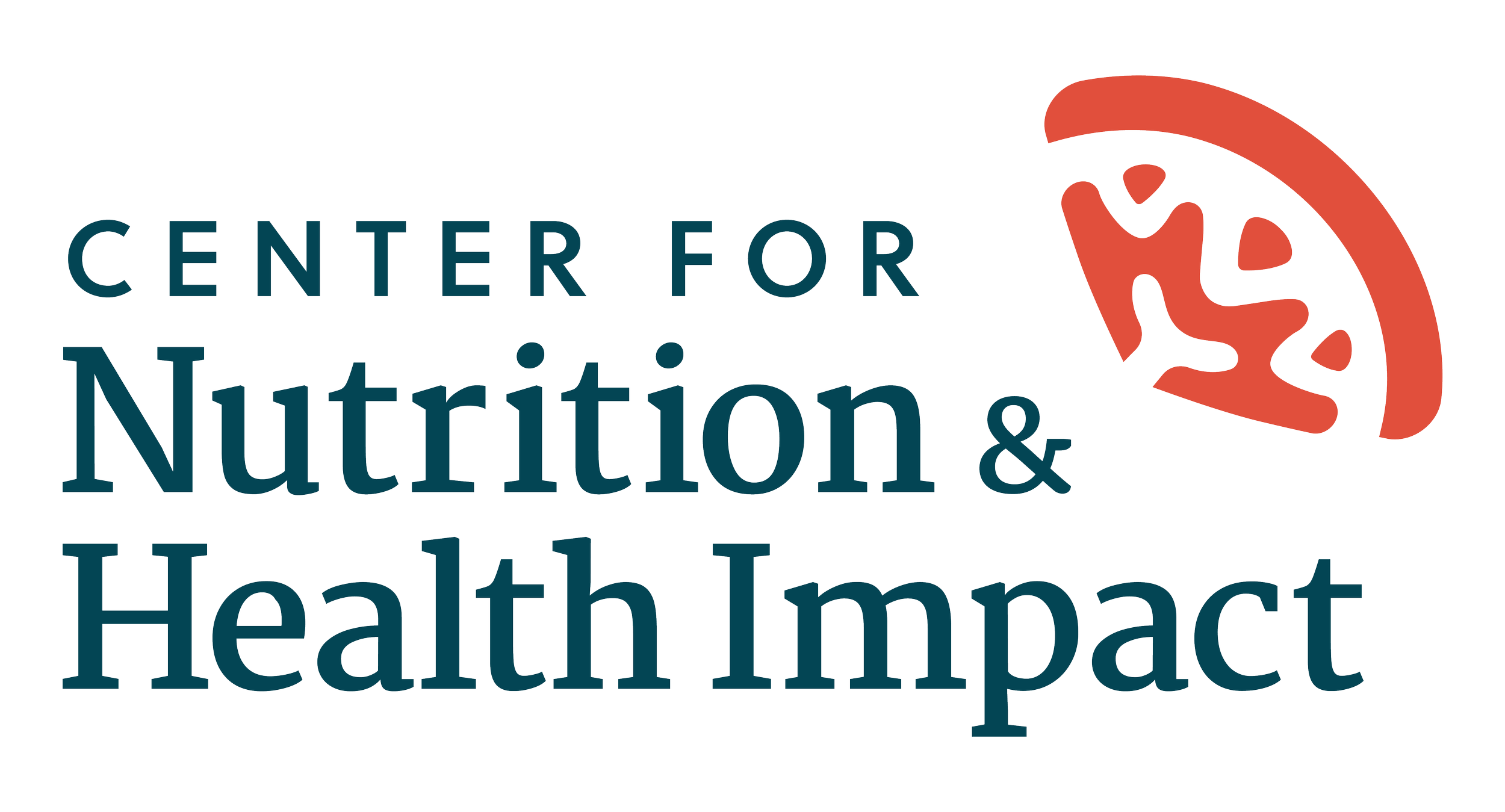Breastfeeding in the Workplace
How employers and peers can support breastfeeding parents’ return to the workplace
------- + -------
This year’s National Breastfeeding Month theme focused on returning to work and breastfeeding, employment laws, employer accommodations and the national Providing Urgent Maternal Protections (PUMP) For Nursing Mothers Act that increases breastfeeding parents’ rights in the workplace. During the month of August, we spoke with Center for Nutrition & Health Impact (CNHI) staff to learn more about how to support breastfeeding parents’ return to the workplace.
“For employers, supporting breastfeeding families is a no-brainer,” said Lisa Akers, research scientist at CNHI. Akers, an International Board-Certified Lactation Consultant (IBCLC) was recently awarded a Fellowship with the International Lactation Consultant Association (ILCA). “Breastfeeding saves on healthcare costs for the breastfeeding dyad and because the baby(ies) are healthier, there is less time missed from work to care for sick children.”
Breastfeeding is considered a “simplified food system that is environmentally sustainable, reliable, self-regulating and socially sustainable through a direct intimate relationship between producer and consumer.” By nature, breastfeeding is in and of itself food security for the infant(s).
There is no more readily available, affordable and nutritious food source than breastmilk, a complete food for infants up to six months of age. Breastfeeding continues to provide the growing child with essential nutrients and energy, helping to prevent malnutrition and micronutrient deficiencies in the second year of life and beyond, along with other foods, according to the World Alliance for Breastfeeding Action (WABA).
But returning to work and the lack of accommodation and support to collect breastmilk throughout the workday often makes the transition difficult for new parents. It can be a lack of privacy, stigma or misunderstanding of breastfeeding’s importance. These limited options in a physical office can leave many new breastfeeding parents stressed and anxious about work performance and time taken throughout the day to pump bottles of breastmilk.
“The mental load of breastfeeding/pumping can also be really heavy,” said Ashleigh Floyd Clark, project manager at CNHI. “Trying to maintain enough supply, monitoring diet to positively affect milk supply, drinking enough water and consuming enough calories are all swirling thoughts,” Floyd Clark said. “It’s just one more thing you’re thinking about all day every day.”
Floyd Clark returned to work 12 weeks after having her daughter in June 2022 and was able to breastfeed her until she was 10 months old, supplementing at six months with formula. However, balancing work and breastfeeding did cause a strain, affecting not only her milk supply.
“In breastfeeding circles, it can feel like there is a real stigma about giving your child anything else,” she said. “So many people end up supplementing, but don’t talk about it because you end up feeling kind of judged by other breastfeeding moms. It wasn’t until I broke down to my friends about the guilt I felt buying formula that they all told me they had to do the same thing.”
Today, more protections are in place for working parents with the passing of the PUMP Act in 2023 aimed at expanding the rights of breastfeeding employees. Piggybacking off the Affordable Care Act (ACA) that passed in 2009, the PUMP Act expanded the Fair Labor Standards Act (FLSA) to require that employers of more than 50 employees provide paid or unpaid time and a space free from intrusion from the public for employees to express their milk during the workday.
Previously to working at CNHI, some staff shared their return-to-work experiences at other workplaces that illustrated the shortfall of not being protected under the PUMP Act.
These included:
Complaints by co-workers of breastfeeding in the open while working due to no privacy
Anxiousness over performance and unpaid time while collecting milk
Storing breastmilk in common refrigerators
One flaw with the ACA requirement was that it only covered nonexempt employees (hourly workers/wage earners). The PUMP Act has made it so that all employees are covered under law and don’t have to fear losing income to continue expressing breastmilk when returning to work, Akers explained. Without universal paid paternity leave, many parents in the U.S. must return to work right away and the PUMP Act allows families to continue breastfeeding while returning to work. This ripples into impacting the economic stability for the family and food security for the infant.
“This Act gives employees a federal law to turn to if they are not receiving the accommodations they deserve,” said Chelsea Hollowell, CNHI project coordinator and Certified Lactation Counselor (CLC). “It also shows families what support they should be receiving from their employer. Whereas five years ago, it would have varied by state whether pumping breaks and a comfortable pumping location were provided. No one should have to pump in a bathroom at their workplace.”
Preparing and empowering parents to make the best goals, objectives and decisions for their family is key.
“It is difficult to be a parent,” said Nicole Cawrse, CNHI project coordinator and Certified Lactation Counselor (CLC). “Employers who are supportive of their employee’s new valuable and important role enables parents to have the best chance to be successful in their parenting and infant feeding goals.”
Under the PUMP Act, an employee may file a lawsuit if:
An employer’s denial of break time to express milk leads to harm
(decrease in milk supply or mastitis)An employee is fired for requesting break time or a space to express milk
No plan is in place for providing a private space for pumping
“Supporting breastfeeding families can be as easy as providing unpaid time and a place to express milk during the workday. However, employers can do so much more,” Akers added. “Beyond the minimal support, employers can work to decrease the barriers to breastfeeding in the workplace by offering breastfeeding classes and support on-site, offering a specific lactation space just for milk expression that offers a sink and refrigerator to store expressed milk during the workday and freely talking with breastfeeding employees about their needs.”
Post-pandemic, the increasing remote work model has alleviated many of the concerns for how to work and continue breastfeeding.
After having twins in June 2021 and returning from maternity leave, CNHI project manager Whitney Clausen knew breastfeeding didn’t present the same challenges as it does for in-office employees. “It was so easy to maintain my supply and still work,” Clausen said. “I had zero prep work to do at the start of the day, like packing a pump bag and making sure I had everything I would need. I rarely had to adjust my pumping schedule because it was really easy to be in Zoom calls while pumping. And I obviously never had to worry about finding an alternative space to pump in.”
And employer support goes beyond just the work environment—it supports the personal decision that the employee has made for their family, Hollowell said. Having a plan for the return to work and understanding individual rights is key. The choice to breastfeed is a personal one and helped people who utilize the Supplemental Nutrition Program for Women, Infants and Children (WIC) prepare the best they could before being away from their child during the workday, she said.
Having employer support can ease that transition for new parents.
“At the end of the day, the most important thing is making sure your baby is fed, healthy and happy,” Floyd Clark said. “Breastfeeding can be a beautiful experience. But it is also HARD, time-consuming, sometimes painful and mentally exhausting. And we do not do an adequate job providing women with the resources needed to be successful. I feel incredibly fortunate to work at an organization that was supportive of my journey. I wish society would come along a little further in decreasing the unrealistic expectations put on parents and supporting the full journey that parenthood is.”







